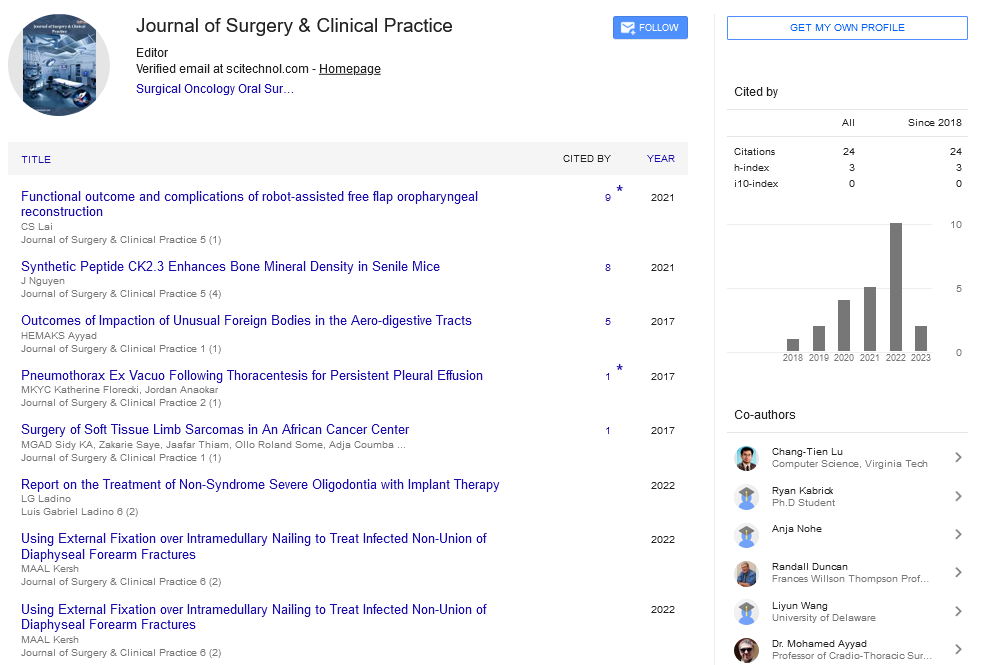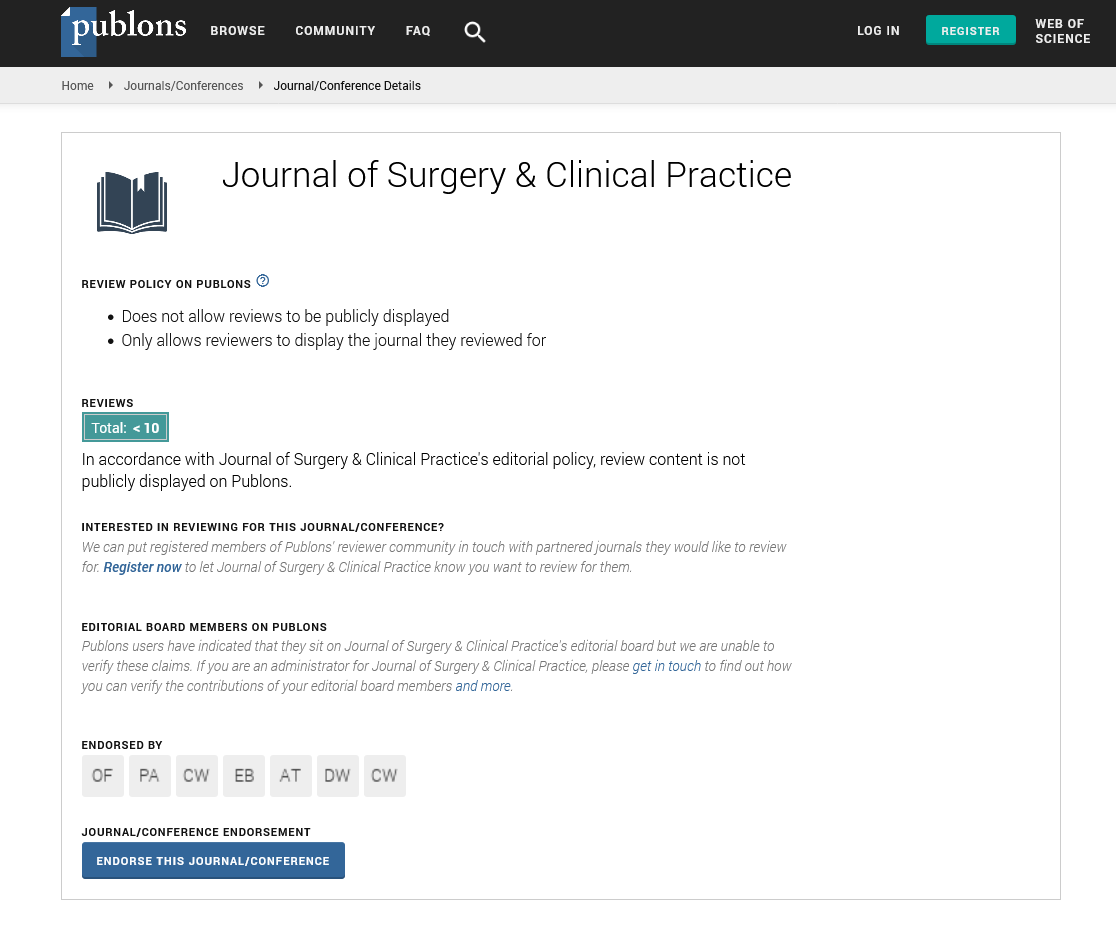Commentary, J Surg Clin Prac Vol: 7 Issue: 3
Post-Operative Rehabilitation for Enhancing Quality of Life in Joint Replacement Surgery Patients
Katya Remy*
1Department of Surgery, Erasmus Medical Center, Boston, USA
*Corresponding Author: Katya Remy,
Department of Surgery, Erasmus Medical
Center, Boston, USA
E-mail: katya@remy.edu
Received date: 23 August, 2023, Manuscript No. JSCP-23-117724;
Editor assigned date: 28 August, 2023, PreQC No. JSCP-23-117724 (PQ);
Reviewed date: 11 September, 2023, QC No. JSCP-23-117724;
Revised date: 18 September, 2023, Manuscript No. JSCP-23-117724 (R);
Published date: 25 September, 2023 DOI: 10.35248/JSCP.23.7.1000388
Citation: Remy K (2023) Post- O perative Rehabilitation for Enhancing Quality of Life in Joint Replacement Surgery Patients. J Surg Clin Prac 7:3.
Description
Joint replacement surgery, also known as arthroplasty stands as one of the most transformative medical interventions of the modern era. For individuals suffering from chronic joint pain, typically caused by conditions like osteoarthritis or rheumatoid arthritis, joint replacement surgery offers a renewed lease on life. Chronic joint pain can severely limit an individual's ability to perform everyday tasks, affecting their independence and overall well-being. Conditions like osteoarthritis affects the joint cartilage, leading to pain, stiffness, and reduced mobility.
When conservative treatments such as physical therapy, medications, and lifestyle modifications fail to provide relief, joint replacement surgery becomes a beacon of hope. Joint replacement surgery involves removing damaged or diseased parts of a joint and replacing them with artificial components made from metal, plastic, or ceramic materials. While commonly performed on hips and knees, this procedure is also applicable to other joints like shoulders and elbows. The surgery begins with a thorough evaluation by orthopedic surgeons and healthcare professionals. Detailed imaging, medical history analysis, and discussions about the patient's lifestyle and expectations are integral parts of this assessment.
During surgery, skilled orthopedic surgeons meticulously remove damaged joint surfaces, ensuring minimal disruption to surrounding tissues. The artificial joint components are then precisely implanted, enabling smooth movement and reducing pain. Advancements in surgical techniques have led to minimally invasive approaches, resulting in smaller incisions, reduced tissue damage, and faster recovery. These techniques minimize post-operative pain and accelerate rehabilitation, enabling patients to regain mobility swiftly.
Post-surgery, physical therapy plays an important role. Therapists work closely with patients, guiding them through exercises that strengthen the muscles surrounding the replaced joint. These exercises enhance joint stability and support the recovery process. Occupational therapists assist patients in adapting their daily activities to their new joint function. They offer strategies to perform tasks effectively; ensuring patients can resume their routines and regain independence. Pain management is a crucial aspect of post-operative care. By employing a combination of medications, physical therapy, and techniques such as ice and heat therapy, healthcare professionals ensure patients are comfortable during their recovery period.
The most evident and immediate change after joint replacement surgery is the restoration of mobility. Patients who once struggled to walk or perform basic movements find themselves liberated from pain, enabling them to engage in activities they once enjoyed. Beyond physical mobility, joint replacement surgery profoundly impacts patients' quality of life. Reduced pain fosters emotional well-being, enhancing overall mental health. Patients regain confidence, allowing them to participate in social events, pursue hobbies, and spend quality time with family and friends. Independence is a fundamental aspect of a fulfilling life.
Joint replacement surgery empowers individuals, allowing them to live without constant reliance on others for daily tasks. This newfound independence not only boosts self-esteem but also fosters a sense of control over one's life. As medical advancements continue to invent new techniques and enhance patient outcomes, the future of joint replacement surgery holds even greater promise. With each successful surgery, the medical community reaffirms its commitment to enhancing the mobility and quality of life for countless individuals, ensuring that the transformative power of joint replacement surgery continues to change lives for the better.
 Spanish
Spanish  Chinese
Chinese  Russian
Russian  German
German  French
French  Japanese
Japanese  Portuguese
Portuguese  Hindi
Hindi 
